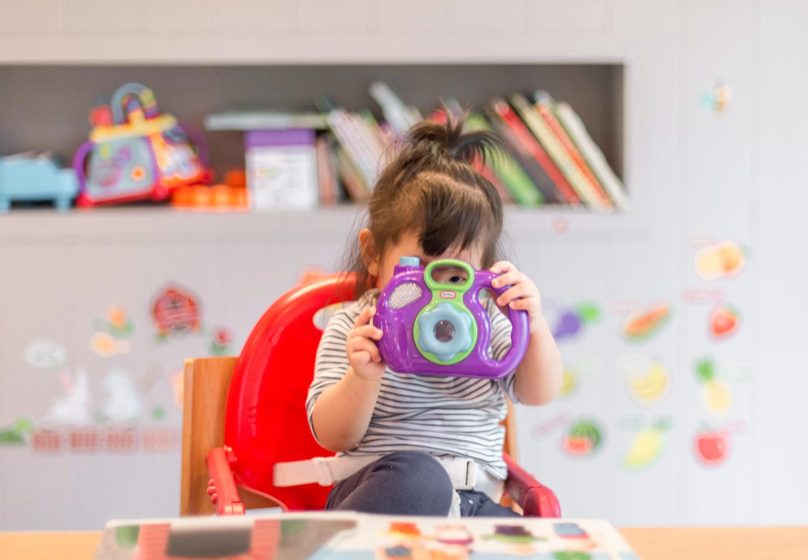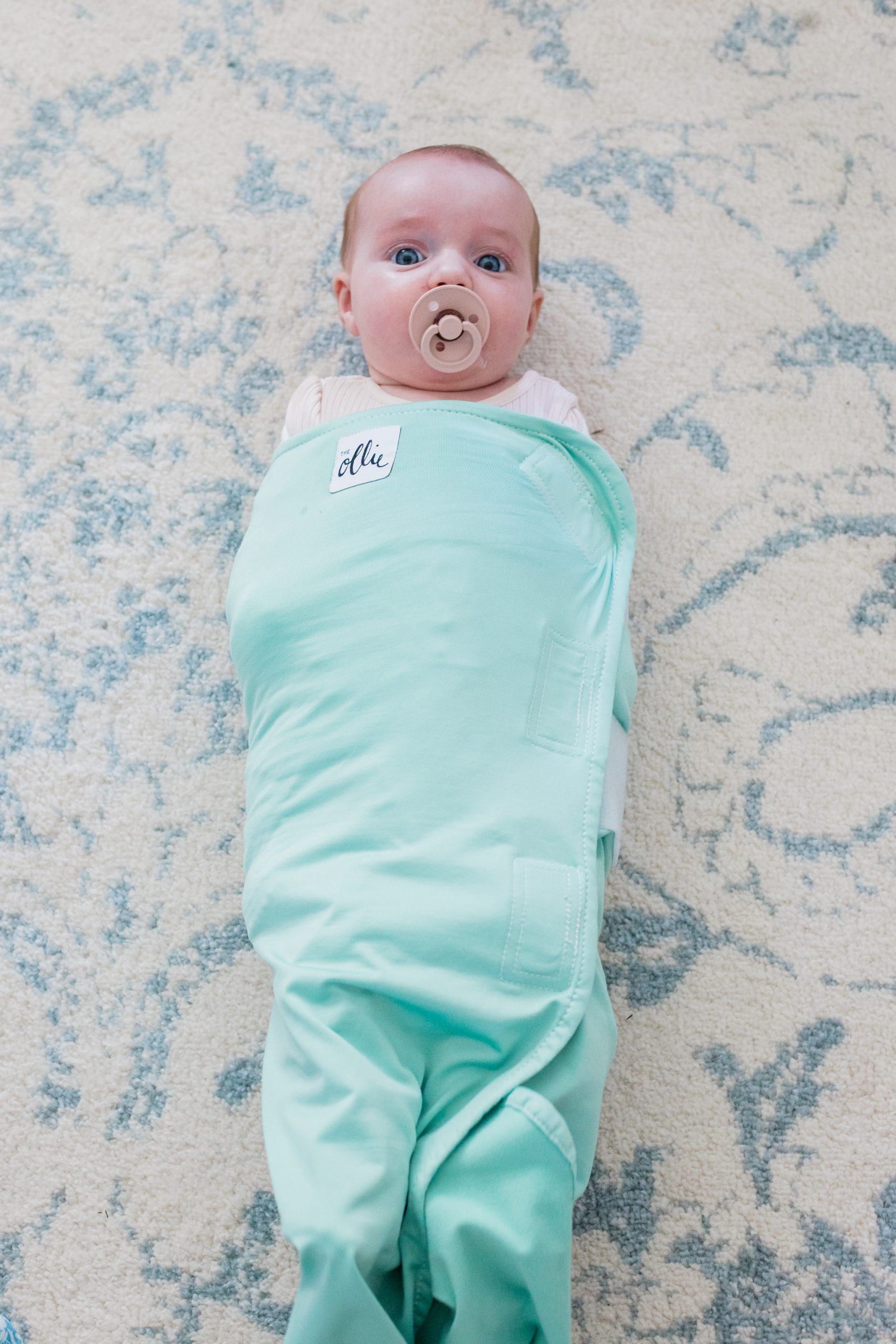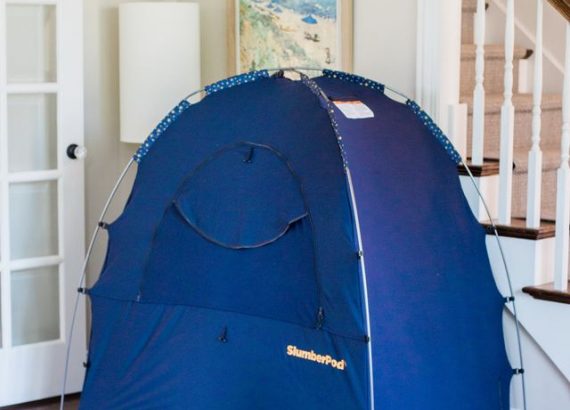There are so many benefits of sending your baby or toddler to group care. Exposure to same aged children, preparation for a more traditional “school” experience, and the opportunity for them to have more unique and diverse experiences than they can have at home are just a few. Lindsey Loucks, mother of two and former childcare administrator and teacher, shares her best tips for preparing your baby or child for daycare in this post.
After working in childcare as a teacher and as an administrator, I became aware that most families were not equipped with information on how to prepare their babies, toddlers, or preschoolers for group childcare. Having just a few tips for each age group can make all the difference and can help set a family up for success during the transition.
Group care tips for infancy (typically 6 weeks to 15 months)
Bottle feeding
A single bottle feed a day will not lead to nipple confusion or set back a breastfeeding/chest-feeding journey if that is the path you have chosen. It will help avoid bottle refusal at daycare that can cause a lot of stress and anxiety for both the child and parents.
Are you correctly bottle feeding your baby in the right position? Read this blog post to find out more!
Have people outside of the primary caregiver offer bottles and soothe the baby on occasion. Babies get used to how they’re held when being fed, nursed or consoled! Having others bottle feed your baby will provide the opportunity for the baby to be exposed to other sounds, sensations, and even smells when being fed or soothed.
Do you need help with bottle feeding? Schedule a text or video chat consult with Kate, Lauren or Natalie (NICU RNs) and they can help your baby take a bottle! They can also help you in-person if you live in the Chicagoland area.
BOOK CONSULT NOW
Need more bottle help?
- Watch the recorded version of our Bottle Refusal Workshop
- Read our blog post on how to correctly bottle feed your baby
- Watch our Instagram reel on correctly bottle feeding your baby
- Read our Back to Work blog post to learn how to prepare yourself and your family for group care.
Sleep environment
Expect your baby’s naps to be off schedule when you first start group care! Many babies are napping in dark and quiet spaces at home so taking a nap in a group environment will be an adjustment. Typically, they get the hang of it in a few days, but be sure to let your providers know how your baby naps at home so they can try to be as consistent as possible within their space.
PRO TIP: There is no need to change the nap environment at home, they can adjust to sleeping in both sleep spaces!
*NOTE from Kate (owner of Bumblebaby): Expect a two week adjustment period for naps at daycare. Ask if you can bring a portable sound machine to add extra white noise. If you are doing a nanny share or the daycare will allow it, a Slumberpod (use code BUMBLEBABY$20 for discount) is a life saver and one of Kate’s favorite sleep products. Read more about it in Kate’s blog post and IGTV. Check out our tips on room sharing here!
*If you live in Canada, please click here and use code BUMBLEBABY$20
Floor time
Baby floor containers (bouncers, swings, etc.) are typically not encouraged in daycare facilities. In a perfect world, your child is engaging with other peers and the adults providing care. It is usually best practice for this to occur with infants on their bellies or backs in order to develop crucial core strength while also engaging socially.
If your child spends a lot of time in equipment at home, it may be a tough adjustment when they primarily have floor time at school.

Group care tips for toddlerhood (15 months-3 years)
Drop-offs
If starting childcare after infancy, the scariest component for parents is often separation anxiety. It can be really scary to leave your child with someone new and if they are upset, it’s another tough layer to work through.
It is extremely important to have a drop off routine that you are able to be consistent with each day. For some, this is a quick kiss, goodbye, and hand-off to a teacher.
For others, you may want to spend some more time and you may read one or two books and then say goodbye. Ideally, drop-offs should. not take more than 4-5 minutes (at the longest).
Either way, do not deviate from your routine. If your toddler learns that pulling on your pants and crying gets you to stay longer, they will try that again and likely escalate each day creating a very difficult relationship with the school and in particular, saying goodbye.
With a regular routine, they will realize over time that the structure doesn’t change and meltdowns should decrease.
Another key point to drop off success would be to assess how you behave around and talk about school. Our kids sense our hesitation and anxiety so it’s really important that you’re sending the right message that your child is safe at school.
Try to work in language like “Wow, I bet there are so many fun toys and friends at school. You’re going to have such a fun day!”
Many schools have photo sharing apps that can be reviewed and it can be helpful to look at them with your child highlighting all of the fun that they will have at school.
If these things aren’t available, try asking a teacher or director for some pictures of the group at play or classroom environment. For very fearful children, a visual schedule of their morning routine (including drop-off) can also be helpful.

Group care tips for preschool children
Preschool children are getting something quite different in group care. At this age, they are preparing for kindergarten and a more structured and independent learning environment.
With hat said, preschool teachers are not expecting your child to come to school knowing their letter sounds or how to read.
Self-care
Typically, students are expected to have basic self-help skills. They should be able to or be working on putting their own clothes on and taking their shoes on and off by themselves.
They should be able to help clean up after mealtime and participate in some personal hygiene tasks. Children usually need to be potty trained with the understanding that accidents happen. Check out our potty training blog post!
Eliminating flight risks
Preschoolers should be able to walk safely with the group on a walk. It’s helpful to have them practice walking in the grocery store while holding your hand opposed to riding in the cart and to walk around the block next to you instead of in the stroller.
Nap times
If your child doesn’t nap, but the program has a rest time, they should be able to sit nicely on their cot with quiet activities while allowing friends in class to nap. It is not always an option for a child to skip rest time based on classroom ratios and licensing requirements for the age group and space.
- Back to school essentials
- 8 helpful tips for parents adjusting to daycare
- Items to leave at grandparents’, nanny share or second caregiver’s house
- How to travel with kids
- 10 common illnesses babies + kids get
- Going back to work tips












